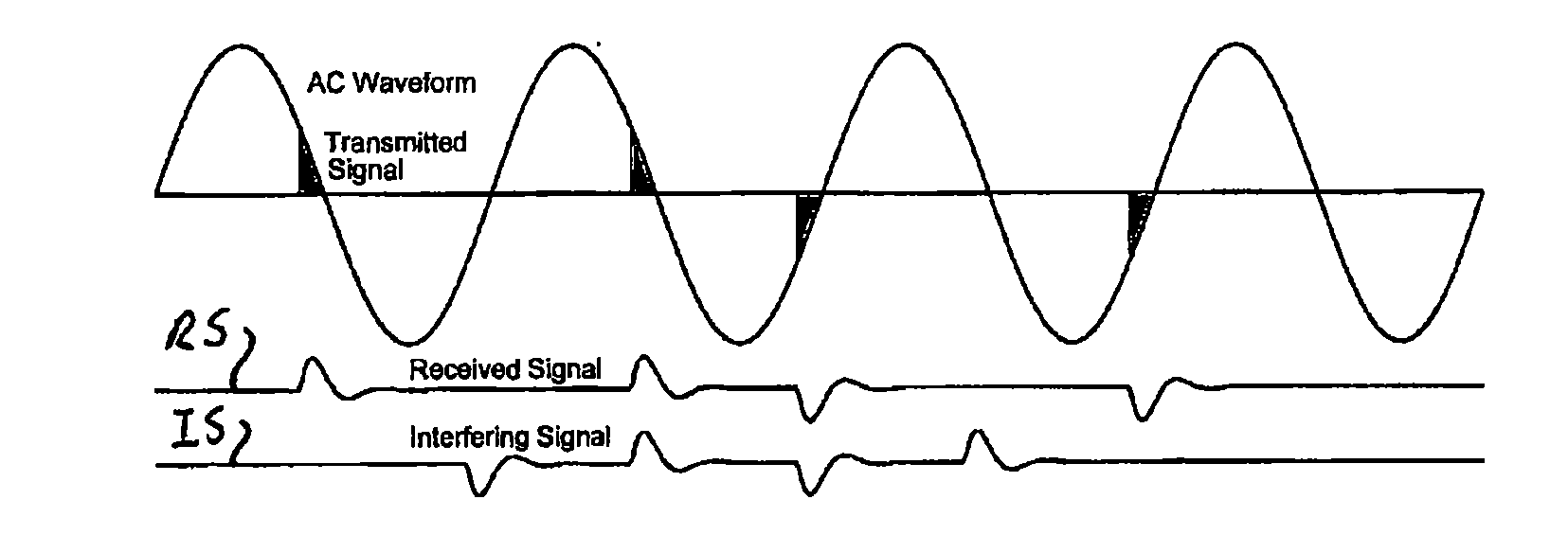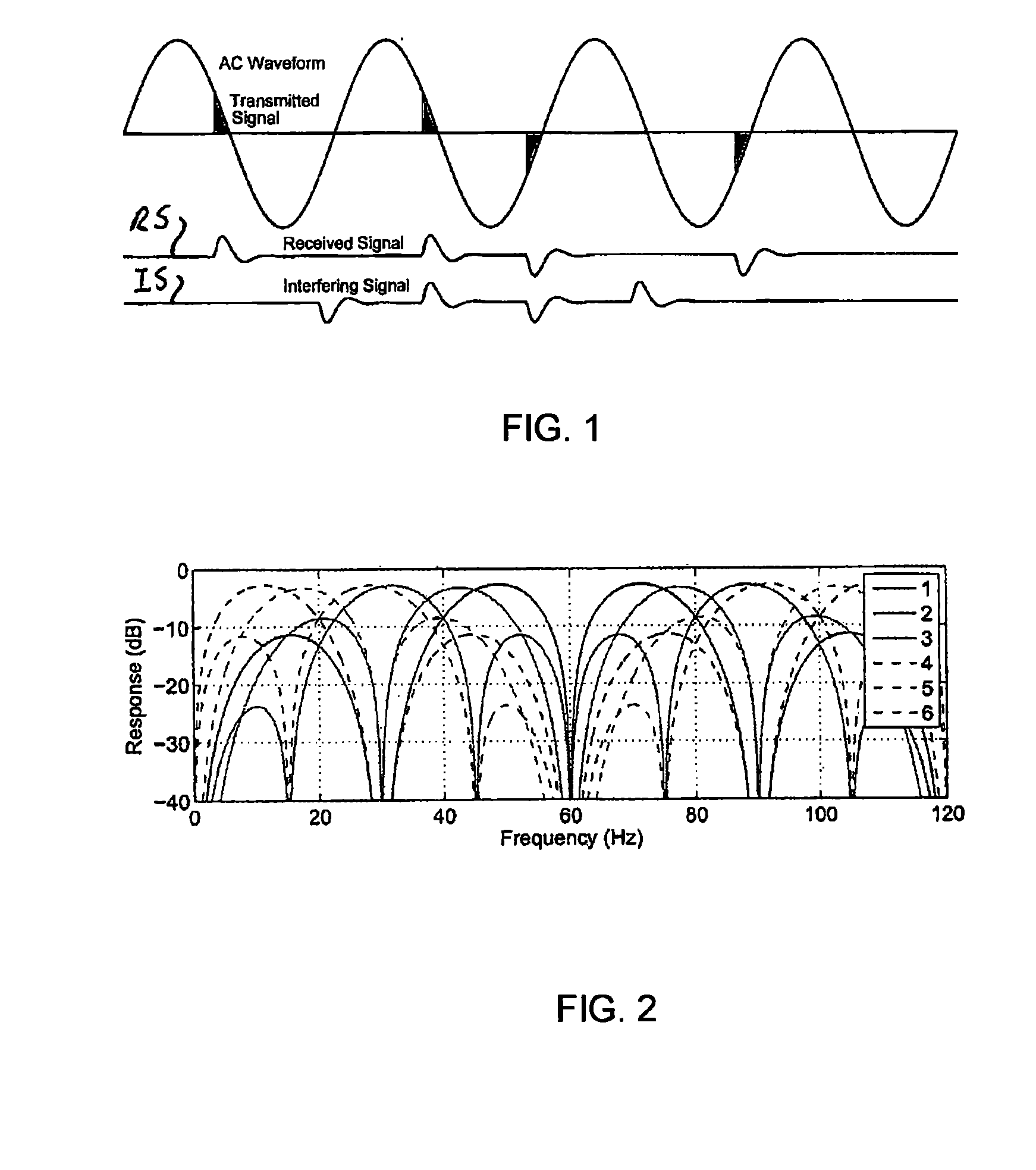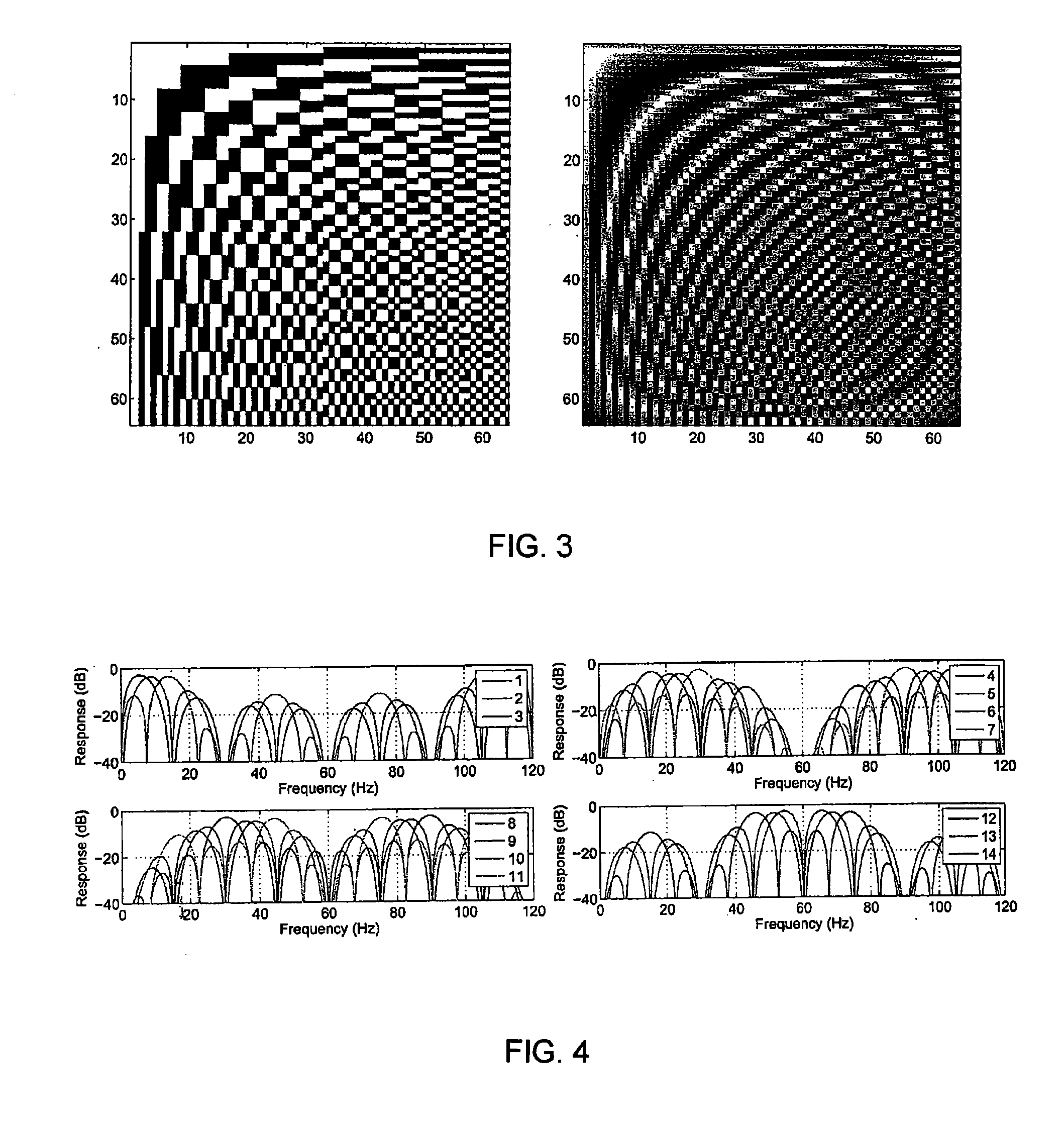General method for low-frequency data transmission on a power line
a power line and low-frequency data technology, applied in the field of communication over power lines, can solve the problems of inability of transponders to transmit signals with adequate signal power, inability to meet the requirements of transmission power, and inability to meet the requirements of data transmission, so as to achieve the effect of reducing the power requirements of transmission and increasing the data ra
- Summary
- Abstract
- Description
- Claims
- Application Information
AI Technical Summary
Benefits of technology
Problems solved by technology
Method used
Image
Examples
Embodiment Construction
[0017]It will be understood by those skilled in the art that pulse patterns used to produce bits transmitted over a power line must satisfy certain system constraints. In TWACS, for example, for a pulse pattern with a length of N half-cycles, a transponder (not shown) transmits pulses in one-half of the half-cycles of a 60 Hz AC waveform in order to signal a logical “0”; and in the opposite combination of half-cycles to signal a logical “1”. Accordingly, N is an even number.
[0018]Referring to FIG. 1, a modulated waveform W is illustrated. The waveform is produced by switching a signaling load (not shown) into a circuit near the zero crossing of the AC waveform in four of eight sequential half cycles of the waveform. The polarity of each of the pulses is determined by the polarity of the AC waveform at the particular zero crossing. The pulse pattern shown here corresponds to a logical “0” in channel 4 of a set of six channels. Two additional waveforms, indicated RS and IS respectivel...
PUM
 Login to View More
Login to View More Abstract
Description
Claims
Application Information
 Login to View More
Login to View More - R&D
- Intellectual Property
- Life Sciences
- Materials
- Tech Scout
- Unparalleled Data Quality
- Higher Quality Content
- 60% Fewer Hallucinations
Browse by: Latest US Patents, China's latest patents, Technical Efficacy Thesaurus, Application Domain, Technology Topic, Popular Technical Reports.
© 2025 PatSnap. All rights reserved.Legal|Privacy policy|Modern Slavery Act Transparency Statement|Sitemap|About US| Contact US: help@patsnap.com



